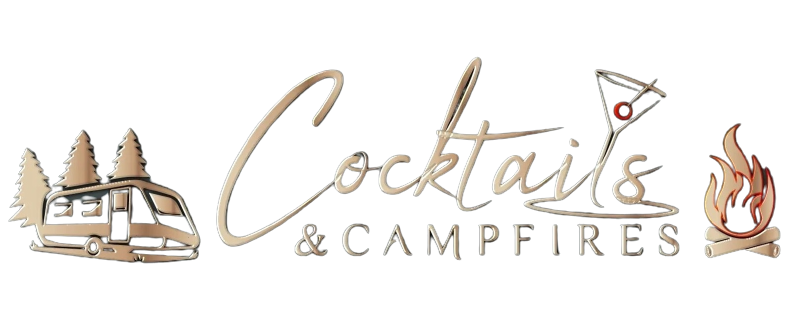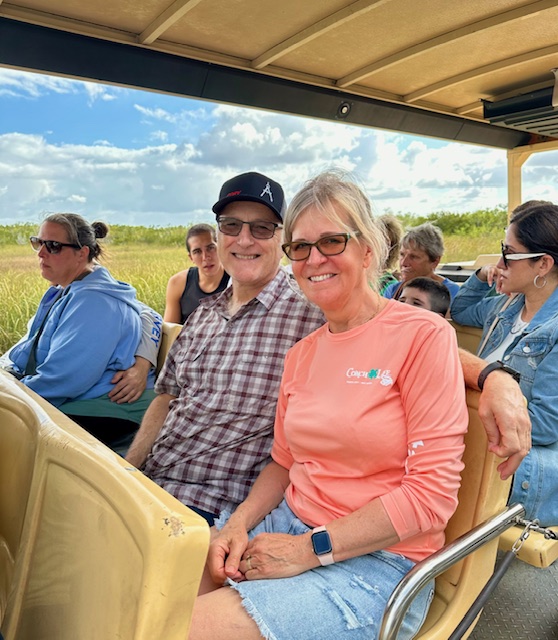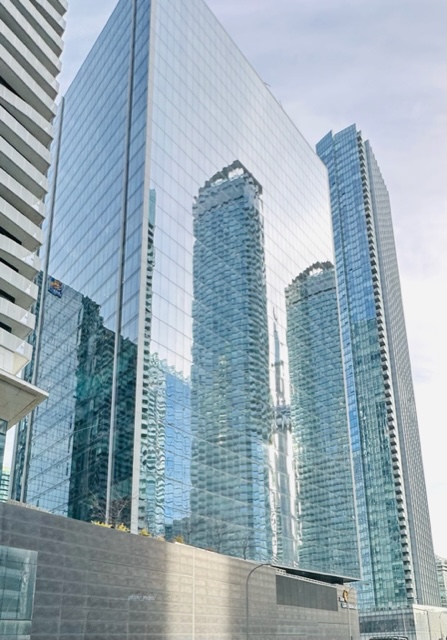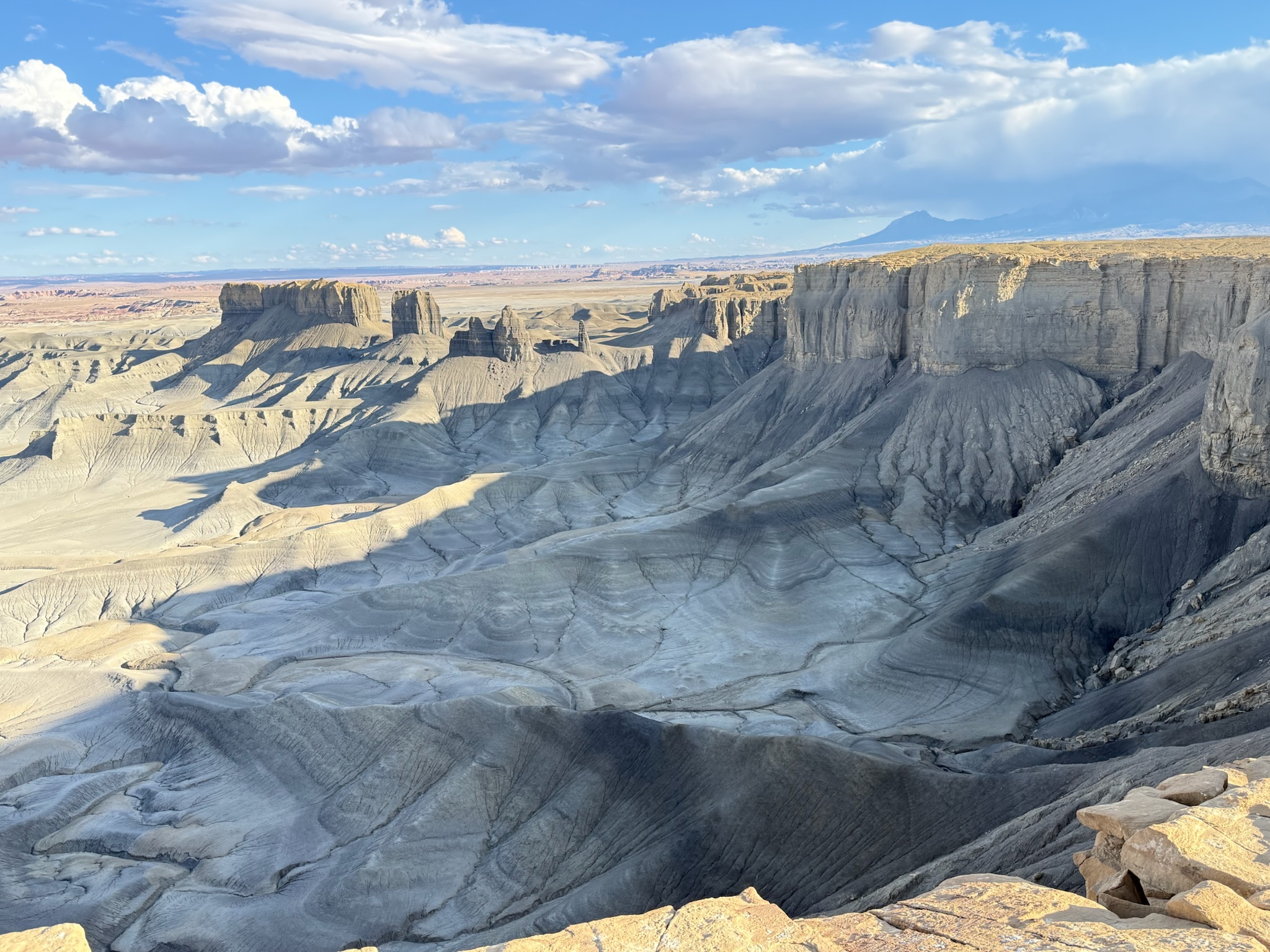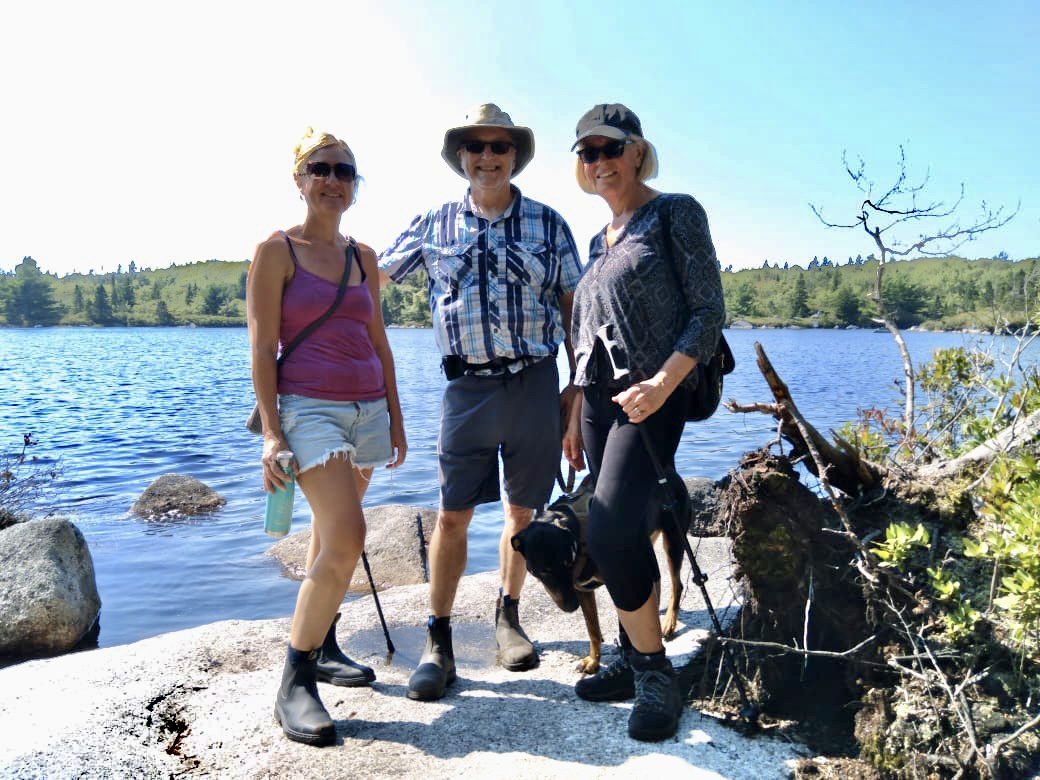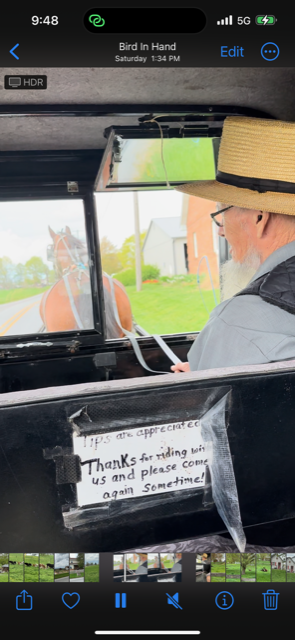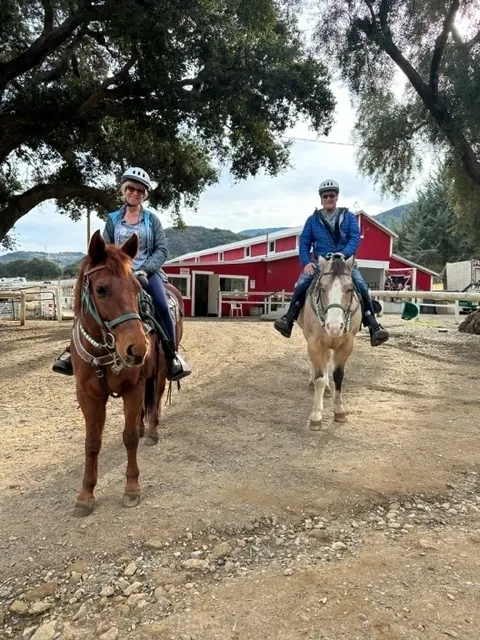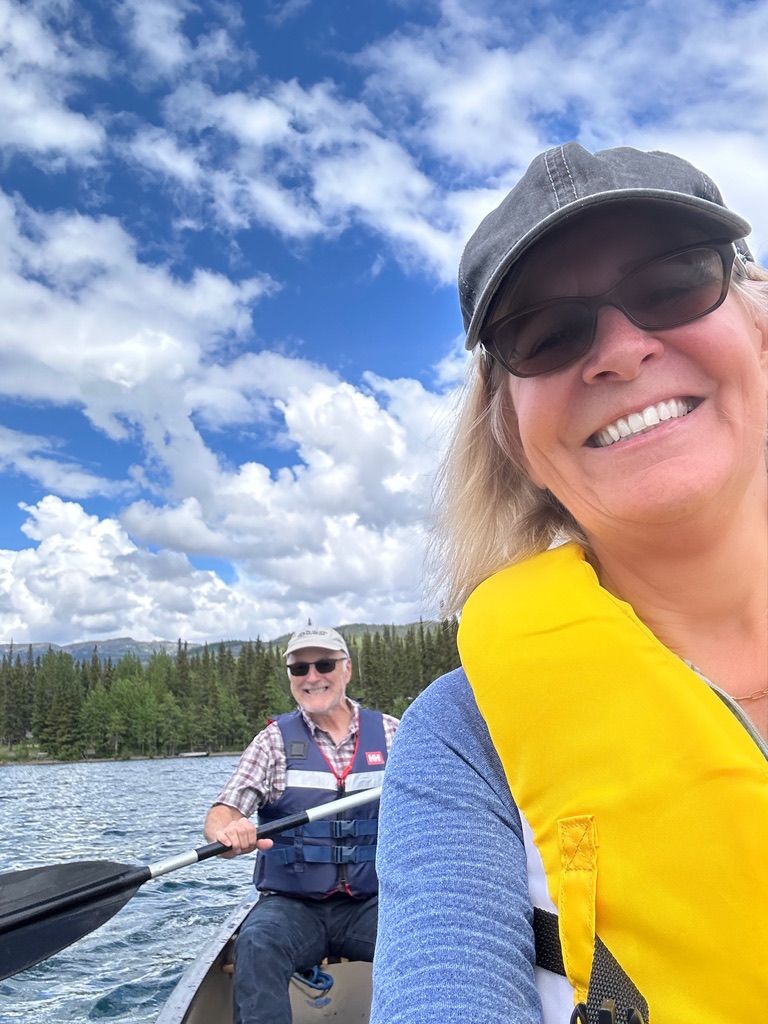We really enjoyed our time in Miami. The Miami-Dade area where we stayed ranks first in the US in the production of ornamental plants and second in Florida in farm production. Everything seems to thrive in this hot and humid climate. Our campground was surrounded on all sides by tropical floral nurseries and farms. Within the park itself were a number of beautiful flowers like Orchids and bronze leaved Clerodendrums with many of the plants using Palm trees as a strong anchor to grow up against. There were also tons of lizards that would run very fast away when they are approached. I saw a really unusual looking rainbow coloured one which is called a Peter’s Rock Agama . They are from West Africa and much larger than a normal brown lizard.
On Friday we took a drive to the Design District in downtown Miami. More than 20 years ago, this was a forgotten part of Miami was transformed into a creative community through exceptional architecture, design, and experiences. Today it is a luxury destination bringing together the biggest names and most exciting trendsetters in the worlds of fashion, dining, and art. Sophisticated fashion designers like Louis Vuitton and Dolce and Gabbana to premium accessory designer like Cartier, Van Cleef and Arpels or Hermes. There is also the largest concentration of fine and upscale dining options as well as art galleries and museums. It was certainly an experience to walk around and window shop while admiring the meticulously maintained landscaping and art sculptures. The window dressings and interior design of the shops themselves were an artistic expression. This District certainly has something for every one (provided you have lots of money!!) There was even a colourfully wrapped police car which fitted right in. The artwork on the car is part of a collaboration between the Do The Right Thing of Miami, Inc., a not for profit organization and the City of Miami Police Department to encourage and reward Miami youths for doing the right thing. The parkade where we parked belonged to the Museum of art and it was an amazing art piece too. Next to it was a small park with a few food trucks where we were able to get a couple of tasty Poke bowls for supper. Derek got the salmon and veggies bowl and I went for the vegetarian option. I always carry Jax’s kibble and a collapsible dog bowl with me, just in case we want to stop somewhere for supper.
After dinner we drove to the Art Deco historic district. Miami is home to the highest concentration of colourful art deco buildings in the world. The last time we were here was in 1993 on our honeymoon.
Deco was a popular design style of the 1920s and ’30s and has simple lines and clean shapes. The buildings are sleek geometric or stylized forms using both man made materials like plastics and ferroconcrete and natural substances like jade, silver, chrome etc. The place was buzzing – loud upbeat music, sports cars racing up and down Ocean drive and many people enjoying dinner/drinks in the outside restaurants, or just hanging out at Miami beach. Known for its party scene, there are many clubs here with international DJs, hip hop artists and pop stars performing live 7 days a week. It was extremely hard to find any parking so Derek dropped me off and I just walked along the beach and took photos of the beautiful buildings.
We were considering going away for the weekend to the Keys and staying overnight somewhere. However after doing some research we gave up on that idea as the price of accommodation – even for a cabin – was outrageously priced. So we decided not to drive all the way to Key West, but instead through Key Largo to Islamorada. Driving along the Keys we were immediately transported back to 2006-2007 when we lived and travelled for a year around the Caribbean on a boat. The beautiful turquoise water, white sand, pastel coloured houses, many varieties of fish and an overall chill atmosphere.
There are 800 Keys in total connected by 42 bridges, stretching over 180 miles. As we drove through the Keys we stopped along the way to admire the Atlantic ocean on the one side and the Gulf of Mexico on the other. The first stop was in Islamorada, a “Sportfishing Capital of the World,” and popular destination for Tarpon fishing. We stopped at a marina which was next to a Bass Pro Fishing store and it had a restaurant on the dock with outstanding views of the Gulf of Mexico. The marina had enormous Tarpon swimming around the dock and next to the restaurant. They were amazing to see. Tarpon (Silver King) grow 5 – 8 ft long and weigh 80 – 150 lbs. They are considered great saltwater game fish, prized for their fight (but not as food.) On the way back to the car I was busy taking pictures of the ocean when I heard a loud noise in a tree above me and looked up to see an enormous Iguana. He had to have been a male as he had very large spikes, heavy jowls and a dewlap, or throat fan to help regulate his temperature. A few things about Iguanas that I did not know: They have a third eye – not like a normal eye, but it does allow them to detect the movement of predators. They can shed their skin and tail and are exceptional swimmers and they are considered invasive in Florida. This is because they are very destructive to gardens and properties. Their droppings are full of bacteria and they consume insects which throws off the ecosystem. Iguana removal and Iguana trapping by professionals in Florida is now encouraged to prevent further destruction.
There is nothing more American than eating a slice of chilled Key lime pie to satisfy the sweet tooth, which we did on the way back through the Keys.
Key lime pie is made from the juice of locally grown small limes, egg yolks and sweetened condensed milk. It may be served with no topping, meringue, or whipped cream and cooked either in a pie crust, graham cracker (biscuit) crust, or no crust. Ours had a biscuit crust, chilled to the point of tasting like ice cream and had a dollop of cream on top. We found it to be extremely sweet.
The Key lime pie’s origins are from the 1800s, when Key West sponge fishermen, kept limes on board to prevent scurvy. They would mix the juice with sweetened condensed milk, sometimes with wild bird or maybe sea turtle eggs. They would then pour this the sweet, tangy mixture over stale Cuban bread and leave it in the sun to set. Later their wives fancied up the recipe by baking it in a pie crust. It wasn’t until Sarah Jane Lowe Curry, the daughter-in-law of Florida’s first millionaire, started serving it to the kids who came to her house. They called her Aunt Sally, and she is the mother of the Key lime pie we know today. In the 1950s that Key lime pie was promoted as Florida’s “most famous treat” and in 1987 as “the greatest of all regional American desserts.”
After we headed out again to look for a place to stop on the opposite side of the road so we could see the Atlantic ocean and ended up stopping at the Harry Harris Park. There we were able to go for a walk with Jax and saw a number of sea sponges spread alongside the trail which must have blown in from the ocean. Sponge fishing is an important industry, with the sea beds off the Florida Keys producing some of the world’s finest natural sea sponges.
It would have been nice to drive all the way down to Key West which is the furthest most point in the Keys. It used to be the largest and busiest town in the whole of Florida, because it is close to the Bahamas and Cuba and provided a trade route up to New Orleans. After the revolution, many Cubans settled in Key West. The Keys still experience escaping Cubans arriving on rafts from time to time. Key West and the Florida Keys were associated with the wrecking industry for many years, with the workload peaking in the middle of the 19th Century, as strong currents and dangerous reefs in the area caused as many as one shipwreck a week.
One of the highlights of our trip to Miami was a 2 hour narrated tram tour through Shark Valley which is part of the Everglades National Park. No sharks though – got its name from the fact that it drains into the Shark river. I was expecting a lush jungle but it turned out to be quite different. The Everglades National park consists of 1.5 million acres, but the Everglades as a whole is 3 million acres. The park consists of saw grass marshes, mangrove forests, and hardwood hammocks dominated by wetlands. In fact it is one of the largest wetlands in the world lying on a layer of limestone. In certain parts there are deep depressions within the limestone allowing for islands of large trees. Water from the Everglades drains into the Biscayne Aquifer, which supplies drinking water to over 8 million people within Florida.
The Everglades is home to endangered, rare, and exotic wildlife and well known for its Alligators, as well as beautiful birds. Snakes are plentiful including the large Burmese python which is considered invasive. As we travelled on our tram we saw many Alligators lying on the side of the road sunning themselves, taking no notice of people driving, walking and cycling by. They seem so docile that after a while I found myself calling out to them affectionately “hello there” like I would to a dog. We did see an unfortunate turtle being eaten by one of the Alligators for supper towards the end of the tour. His powerful jaws just crushed the shell in seconds. Besides Alligators, we also saw a female American Crocodile, who was one of only a few who live in the park. Usually they live in salt water but these have adapted to the fresh water in the Everglades. Interesting fact – When Crocs live in salt water, they store the salt in a pouch under their throat and then dispose of it through their eyes, hence the term – “Crocodile tears.”
The Everglades is the only place in the world where Alligators and Crocodiles co-exist in the wild, but they do not cross breed.
